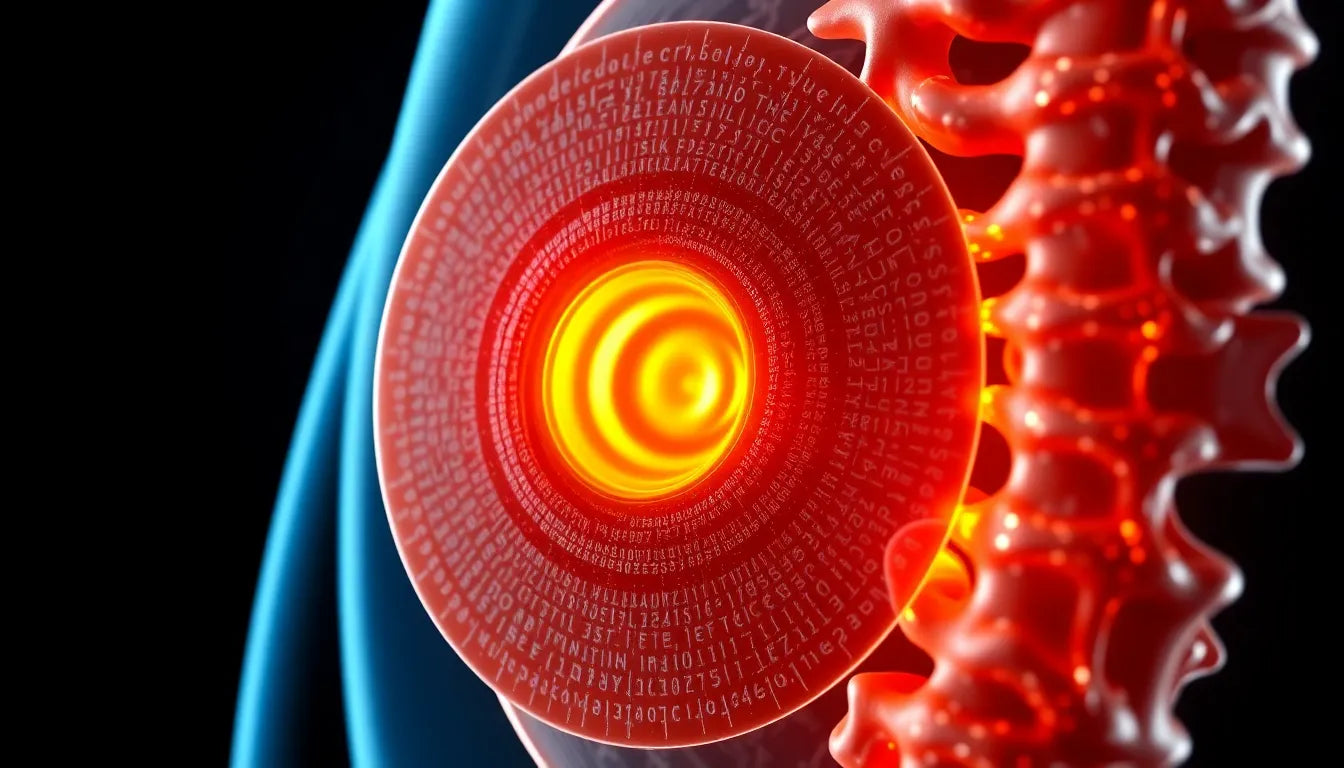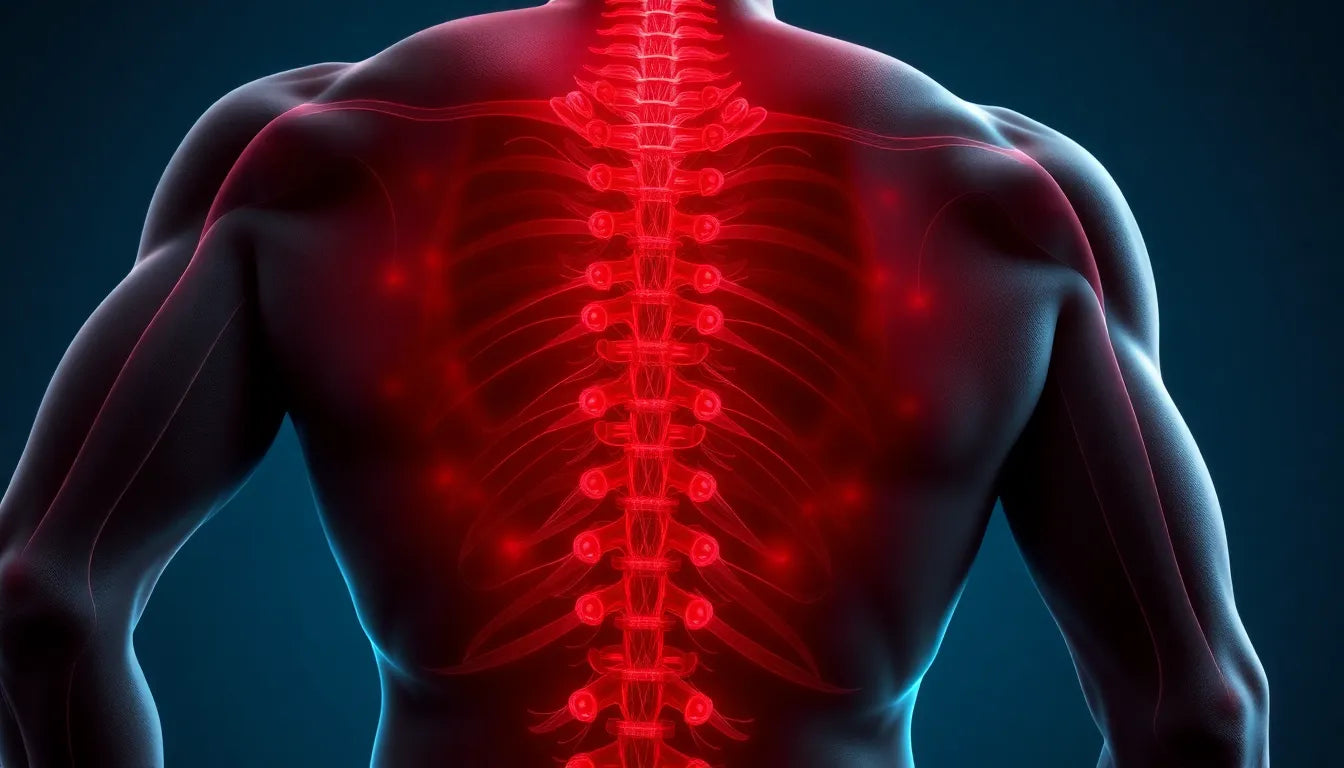A herniated disc, often referred to as a slipped or ruptured disc, occurs when the soft inner gel of a spinal disc pushes through a crack in the tougher outer layer. This condition can lead to a range of uncomfortable symptoms, including persistent pain, numbness, and muscle weakness. These symptoms typically manifest in the back, neck, arms, or legs, depending on the location of the herniation. Addressing these symptoms promptly is crucial to prevent further complications, such as chronic pain or permanent nerve damage.
why non-surgical recovery is appealing
When faced with the prospect of a herniated disc, many individuals are understandably hesitant to jump straight to surgical solutions. Non-surgical recovery methods offer an appealing alternative with several advantages. These methods typically involve lower risks compared to surgery and often entail shorter recovery times, allowing individuals to return to their daily activities more quickly. Non-surgical approaches also provide an opportunity to address the root causes of the herniation, such as poor posture or weak core muscles, which can prevent future occurrences.
embracing a holistic approach to recovery
Recovering from a herniated disc doesn't have to rely solely on one treatment method. Instead, a holistic approach that combines various strategies can be highly effective. This involves integrating lifestyle changes, such as maintaining a healthy weight and practicing good posture, with targeted physical therapy to strengthen the muscles supporting the spine. Additionally, exploring alternative treatments like acupuncture or chiropractic care can complement traditional methods, offering a more comprehensive path to healing. By setting the stage for recovery with a well-rounded plan, individuals can enhance their chances of a successful, non-surgical recovery.
Non-surgical approaches and general recovery methods
Recovering from a herniated disc without surgery involves a combination of methods that aim to alleviate pain, promote healing, and prevent future issues. One of the primary strategies is rest and modified activity. It's essential to allow your body to heal by avoiding activities that exacerbate the pain. This doesn't mean complete bed rest, which can lead to muscle stiffness and weakness, but rather modifying daily activities to reduce strain on your back. For instance, avoiding heavy lifting and prolonged sitting can help minimize discomfort and promote recovery.
The role of physical therapy in recovery
Physical therapy plays a crucial role in the recovery process from a herniated disc. A physical therapist can guide you through exercises designed to strengthen core muscles, improve flexibility, and teach proper body mechanics. Strengthening the core is particularly important as it provides support to the spine, reducing the risk of further injury. Common exercises might include pelvic tilts, bridges, and gentle stretching routines tailored to your specific needs. These exercises not only aid in recovery but also help prevent future occurrences by enhancing overall spinal health.
Pain management techniques
Pain management is a critical component of non-surgical recovery. Over-the-counter medications, such as non-steroidal anti-inflammatory drugs (NSAIDs), can be effective in managing pain and reducing inflammation. However, it's important to use these medications as directed by a healthcare professional to avoid potential side effects.
Another effective pain management technique is the use of ice and heat therapy. Alternating between ice and heat can help reduce inflammation and alleviate pain. Ice packs can be applied to the affected area for 15-20 minutes every few hours during the initial acute phase to decrease inflammation. Once the inflammation has subsided, applying heat can help relax muscles and improve blood flow to the area, promoting healing.
Gentle stretching and massage therapy
Incorporating gentle stretching exercises and massage therapy can further aid in recovery. Stretching helps maintain flexibility and reduce muscle tension, which can alleviate pressure on the herniated disc. Simple stretches, such as the knee-to-chest stretch or the seated forward bend, can be beneficial when performed regularly.
Massage therapy can also promote relaxation and reduce muscle tension. A skilled massage therapist can target specific areas of tension, helping to relieve pain and improve circulation. This complementary approach can be a valuable addition to your overall recovery plan.
Specific treatments and therapies
Beyond general recovery methods, specific treatments and therapies can offer additional relief and support. Chiropractic care is one such option, where chiropractic adjustments aim to realign the spine and alleviate pressure on the herniated disc. This can lead to significant pain relief and improved mobility for many individuals.
Epidural steroid injections are another treatment option that can reduce inflammation and provide temporary pain relief. These injections deliver steroids directly into the epidural space around the spinal nerves, helping to decrease swelling and pain. While not a long-term solution, they can be beneficial for managing acute pain and facilitating participation in physical therapy.
Acupuncture and alternative therapies
Acupuncture, an ancient practice involving the insertion of thin needles into specific points on the body, has been shown to help manage pain and promote healing. It is believed to stimulate the body's natural pain-relieving mechanisms and improve circulation, which can aid in recovery from a herniated disc.
Other alternative therapies, such as myofascial release, hydrotherapy, and transcutaneous electrical nerve stimulation (TENS), offer additional avenues for pain relief. Myofascial release focuses on relieving tension in the connective tissues, while hydrotherapy utilizes water's buoyancy to facilitate gentle movement and exercise without added strain. TENS, on the other hand, uses electrical impulses to reduce pain signals sent to the brain, providing temporary relief from discomfort.
By exploring these various non-surgical approaches and therapies, individuals can find a combination of treatments that best suit their needs and preferences, paving the way for a successful recovery from a herniated disc without surgery.
When surgery becomes necessary
While non-surgical methods are often preferred for herniated disc recovery, there are situations where surgery may become necessary. Surgical options, such as microdiscectomy and lumbar laminectomy, are typically considered when conservative treatments fail to alleviate severe symptoms or when there is a risk of permanent nerve damage. These procedures aim to remove or repair the damaged portion of the disc, relieving pressure on the nerves and reducing pain.
The decision to opt for surgery involves several factors, including the severity of symptoms, the duration of pain, and the impact on the individual's quality of life. Consulting with a healthcare professional is crucial to evaluate these factors and determine the most appropriate course of action. Surgery is generally seen as a last resort after exhausting non-surgical options, and it is important to weigh the potential benefits against the risks and recovery time associated with surgical intervention.
Conclusion: A holistic approach to recovery
In conclusion, recovering from a herniated disc without surgery is not only possible but can also be highly effective when approached holistically. By combining rest, physical therapy, pain management, and alternative therapies, individuals can address the root causes of their symptoms and promote long-term healing. This comprehensive approach not only alleviates pain but also strengthens the body to prevent future issues.
It is essential for individuals to consult healthcare professionals to tailor a recovery plan that suits their specific needs and circumstances. By doing so, they can ensure a safe and successful recovery journey, ultimately unlocking the secrets to herniated disc recovery without surgery.
Frequently asked questions
What are the first steps to take after being diagnosed with a herniated disc?
Begin with rest and consult a healthcare provider to develop a personalized treatment plan. This plan will likely include modifications to daily activities and a focus on pain management and physical therapy.
How long does it typically take to recover from a herniated disc without surgery?
Recovery times vary, but many individuals see improvement within a few weeks to a few months with consistent non-surgical treatment. Adhering to the recommended recovery plan is crucial for effective healing.
Can lifestyle changes aid in recovery?
Yes, maintaining a healthy weight, practicing good posture, and avoiding activities that strain the back can support recovery. These changes help reduce pressure on the spine and promote overall spinal health.
Is it safe to exercise with a herniated disc?
Yes, but it is essential to follow a physical therapist's guidance to ensure exercises are safe and beneficial. Exercises should focus on strengthening the core and improving flexibility without exacerbating symptoms.
What are the risks of delaying treatment for a herniated disc?
Delaying treatment can lead to worsening symptoms and potentially permanent nerve damage. Early intervention is key to preventing complications and promoting a successful recovery.
Sources
- New York Spine Specialist. "How To Heal a Herniated Disc Quickly."
- Semrush. "What Is a SERP Analysis & How Can You Do One?"
- Sciatica.com. "11 Treatment Options for Herniated Discs."
- Victorious. "SERP Analysis: What It Is & How To Do It."
- Spine-Health.com. "5 Little-Known Tips for Lumbar Herniated Disc Pain Relief."























